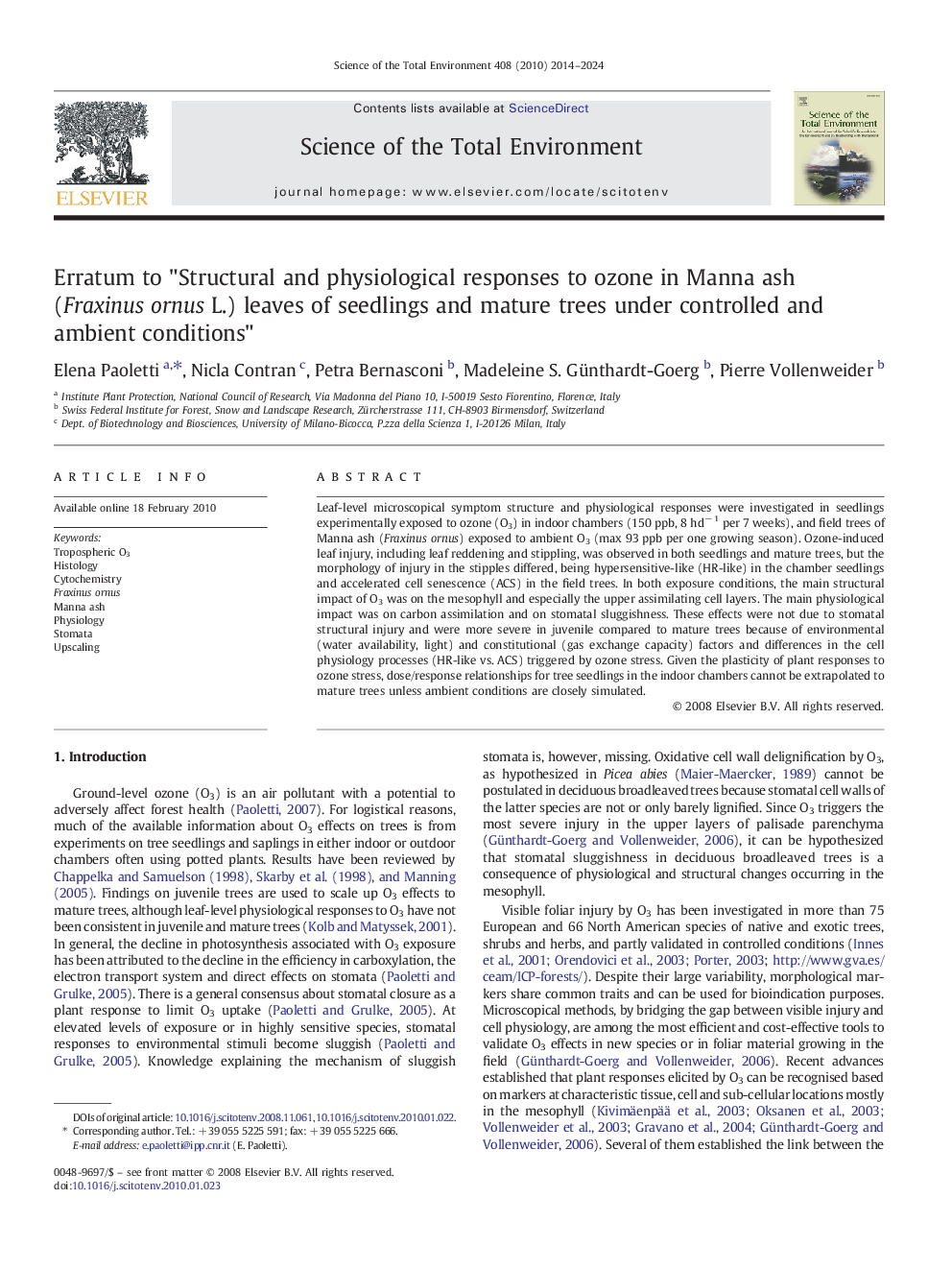| Article ID | Journal | Published Year | Pages | File Type |
|---|---|---|---|---|
| 4431881 | Science of The Total Environment | 2014 | 11 Pages |
Leaf-level microscopical symptom structure and physiological responses were investigated in seedlings experimentally exposed to ozone (O3) in indoor chambers (150 ppb, 8 h d− 1 per 7 weeks), and field trees of Manna ash (Fraxinus ornus) exposed to ambient O3 (max 93 ppb per one growing season). Ozone-induced leaf injury, including leaf reddening and stippling, was observed in both seedlings and mature trees, but the morphology of injury in the stipples differed, being hypersensitive-like (HR-like) in the chamber seedlings and accelerated cell senescence (ACS) in the field trees. In both exposure conditions, the main structural impact of O3 was on the mesophyll and especially the upper assimilating cell layers. The main physiological impact was on carbon assimilation and on stomatal sluggishness. These effects were not due to stomatal structural injury and were more severe in juvenile compared to mature trees because of environmental (water availability, light) and constitutional (gas exchange capacity) factors and differences in the cell physiology processes (HR-like vs. ACS) triggered by ozone stress. Given the plasticity of plant responses to ozone stress, dose/response relationships for tree seedlings in the indoor chambers cannot be extrapolated to mature trees unless ambient conditions are closely simulated.
